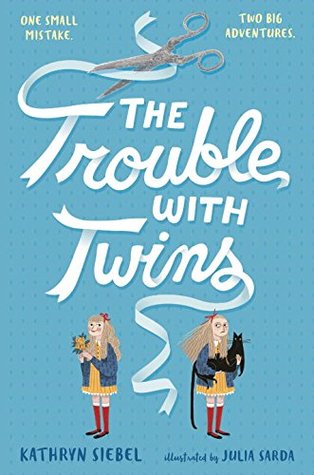 Siebel, Kathryn. The Trouble with Twins
Siebel, Kathryn. The Trouble with TwinsAugust 9th 2016 by Knopf BFYR
Copy received from the publisher
A young girl's mother tells her the story of twins: Arabella Osgood, who was very pretty, and Henrietta, who was less attractive and also boring. Jealous of her sister because of the preferential treatment she recieves from their parents, Henrietta cuts Arabella's hair when she is sleeping and is send away to Great-Aunt Priscilla's as punishment. And punishment it is, since Priscilla feeds her fish head soul and there is nothing more exciting to do than to name the cats. Arabella misses her sister and has bad dreams about her, so sets off to find her. The Osgoods panic and call the police and the school, and a comedy of errors ensues. This includes the Osgoods traveling to Priscilla's and demanding that she sell a ring to offer reward money for Arabella, who is quietly making her way across the countryside. In the end, Henrietta manages to burn down Priscilla's old house, and we learn the connection between the narrator and the twins.
I was so upset by the unequal treatment of the girls at both home and school that I had a lot of trouble with this. I was also alarmed by the way the aunt treated Henrietta and the way the aunt herself was treated. This made it hard for me to like the book, although it has gotten very favorable reviews both at Kirkus and at School Library Journal.
Strengths: This definitely does have a Lemony Snicket/Wolves of Willoughby Chase vibe, and will be enjoyed by readers who are fond of their characters being thrust into unpleasant situations where they are abused and no one calls Children's Services. Twins are always fascinating to middle grade readers as well, and the connection between Henrietta and Arabella despite the adults in their lives is interesting.
Weaknesses: Again, I was deeply disturbed by the treatment of Henrietta.
What I really think: This has a classic vibe to it, and is set in a vague time in the past-- the 1970s, perhaps? Combined with the illustrations, this tone may make this more popular with elementary students than with middle school ones.































No comments:
Post a Comment